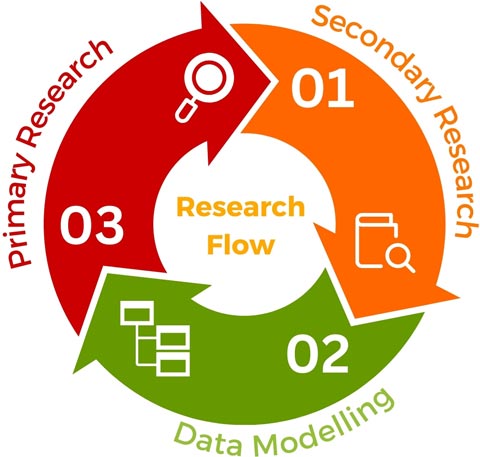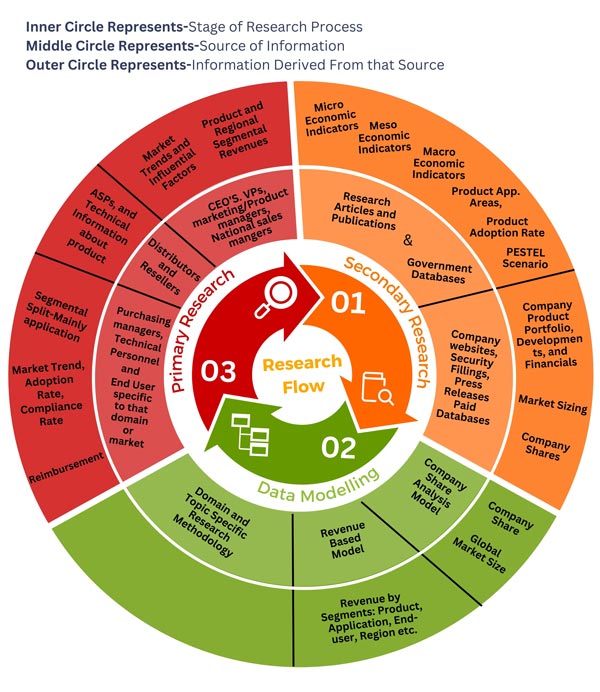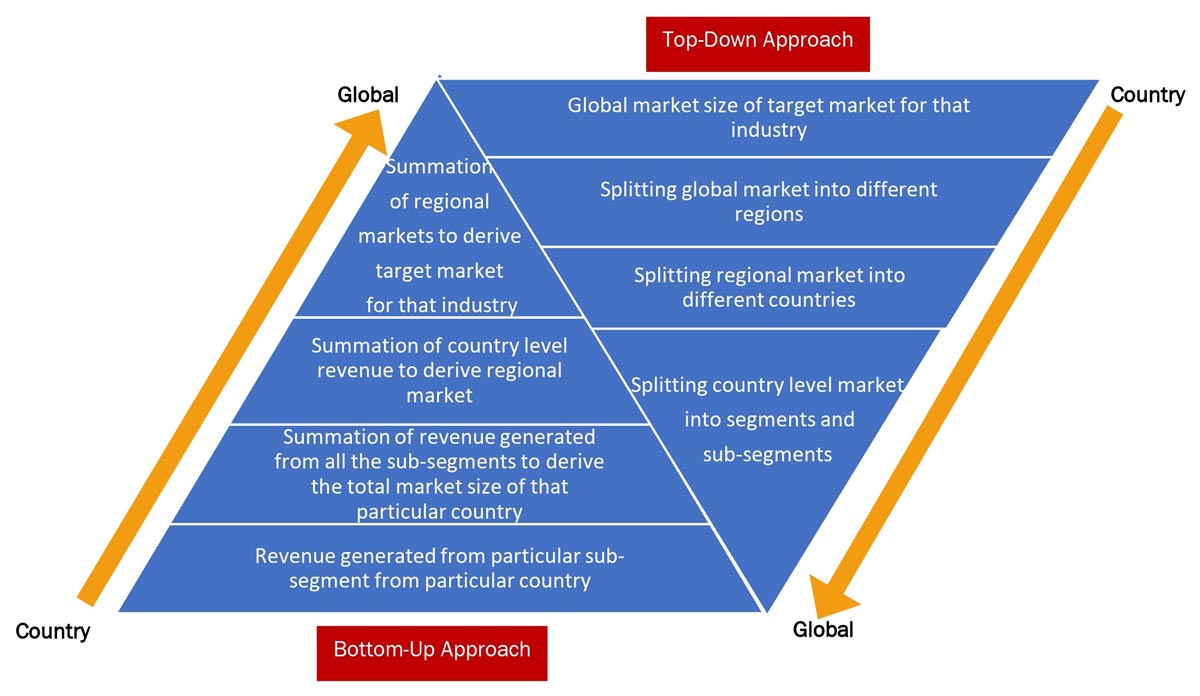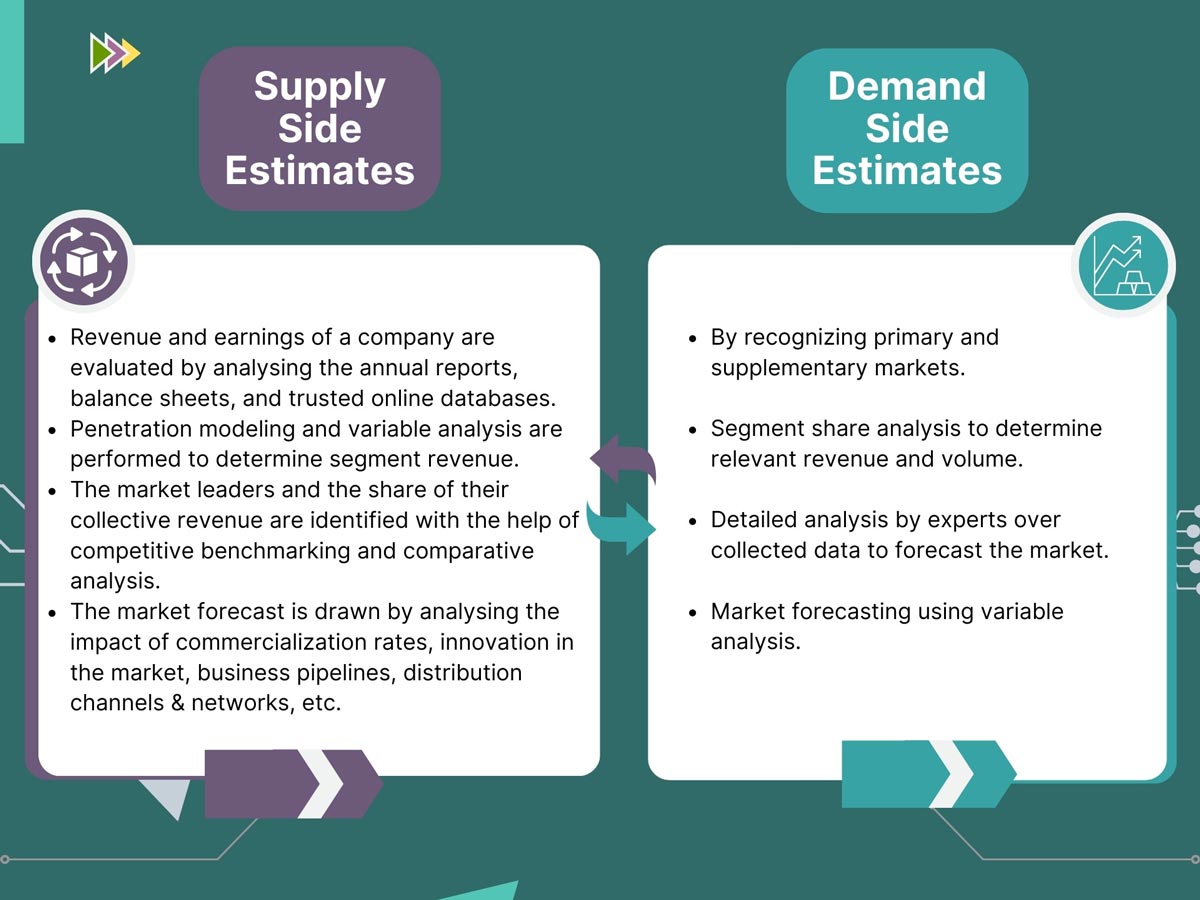Skygaze Market Research implies a comprehensive yet extensive research methodology for the research projects. The research flow comprises consecutive three-step techniques, namely, secondary research, data modelling, and primary research. The data collection process involves extensive secondary databases and resources such as Hoovers, Factiva, Bloomberg, and more. The data is then segmented and filtered according to the perspective of the market and sorted corresponding to the research projects. Thereafter, primary research is done to validate the entire data procured. The primary validation is the conclusion of the data which are collected for the research projects to forecast market growth. The company adheres to a top-down and bottom-up approach to evaluate quantitative and qualitative data as well as data triangulation. Extensive processes are taken up to evaluate and establish the gathered information to provide an unbiased image of the market.

The secondary research is conducted through multiple sources such as news articles, press releases, annual reports, publications, government databases, and market research websites to collect qualitative and quantitative data. It is the crucial process for identifying information such as market classification, industry trends, regional markets, market segmentation, and market perspective as well.
We follow the necessary steps to aggregate data such as data acquisition, data classification, data cleaning, data analysis, and more. With the help of machine learning and algorithms, insightful data are obtained for databases and information directories. The regional classification of the research projects is segmented into Asia-Pacific, North America, South America, Europe, the Middle East, and Africa.
Data that are collected are evaluated and analyzed in comparison with methodologies such as regression analysis and correlation, technological analysis, combining economic tools, and industry & domain expertise to determine the forecast of the market. The information varies from market trends, pricing, technology landscape, and dynamics of the market.
The primary research encompasses information from the market players such as suppliers, manufacturers, processors, and distributors. These quantitative and qualitative data have been acquired from market participants and industry players through interviews, surveys, and observations. The primary participants are the production department, sales and marketing departments, executive personnel, managers, and more.
Major steps such as interviews ensure data validation by providing crucial information and insights about the market, prevalent market synopsis, and market forecast which boost the quality of the market reports. The projections and estimates are verified by Key Industry Participants (KPIs) such as leading companies of the market, suppliers of the raw materials, distributors, and buyers. The primary objective of the research is to validate the precision and suitability of the data and to comprehend market scenarios and projections.

The data is gathered from multiple sources or using various methods. The data is then analyzed and validated to improve the reliability which ensures the accuracy of the data. It is primarily used in qualitative research and by data triangulation the subjective biases and assumptions can be filtered out. Market break-down procedures along with the top-down approach and bottom-up approach are utilized to validate various data sets.

While collecting data the research team keeps a broader approach or view of a particular market and then narrows it down to the specific segments and classifications. First, it focuses on the macro segments of a market and then it gets into the microeconomics of the market. The techniques typically involve market sizing, considering factors that have an impact on the market and macro-level analysis, and market segmentation. This approach helps in forecasting the market growth, demand zone, hindrances, and more.
Data is also collected through specific observations or data points. This approach helps to accumulate detailed information about a particular market segment by observing the micro-level economics of the research. It is used to determine qualitative data, behaviors, preferences, and more. Survey research, interview, and focus group are a few of the popular techniques for the bottom-up approach of market research.
To ensure the credibility of the wide range of data that is collected only verified and reliable sources are taken into consideration. Furthermore, the data is also collected from repositories and premium databases. We gather information from the market participants, suppliers, and distributors as well to have extensive knowledge of the market. Market sentiments such as trends, pricing, hindrance, and drivers are identified through technical data like surveys and trade journals, then it is validated and verified with other resources.
